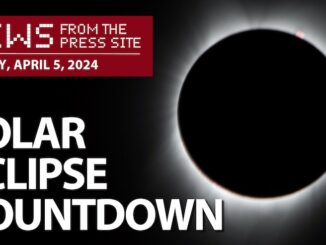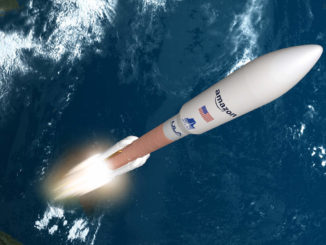EDITOR’S NOTE: Updated May 1 with details from Blue Origin.
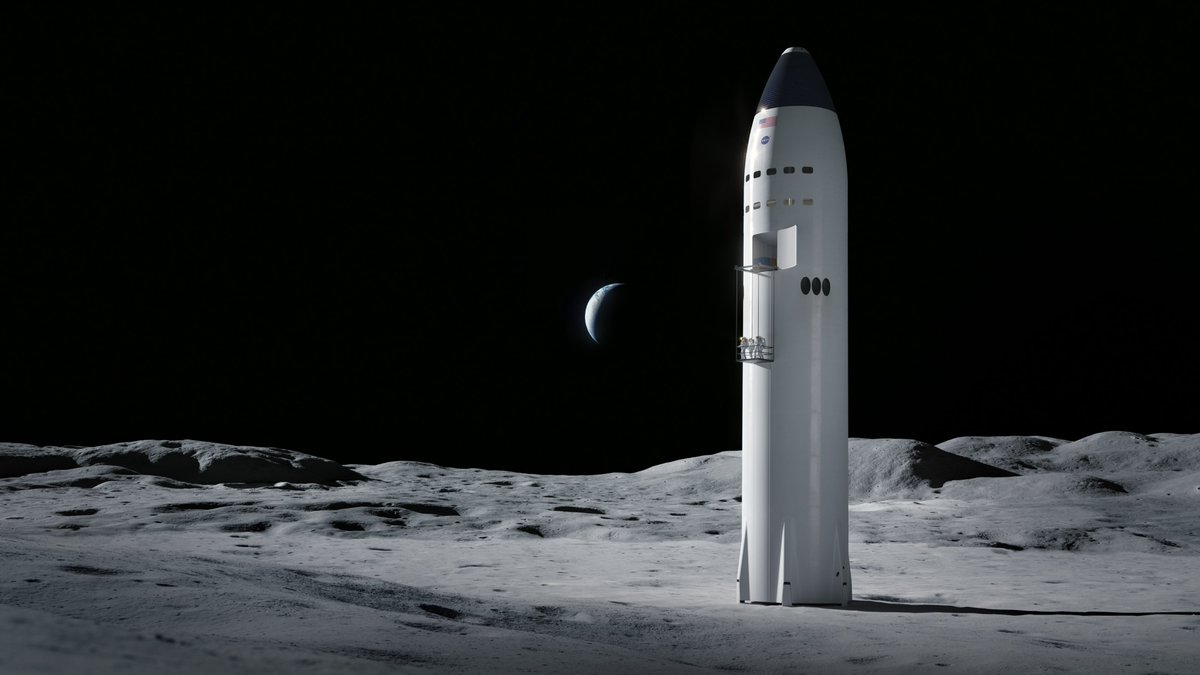
The next time astronauts land on the moon, they will ride to the lunar surface in a spacecraft that looks a lot different than the Apollo-era landing module last used in 1972. Lander concepts proposed by SpaceX, Blue Origin and Dynetics — which won a combined $967 million in NASA funding Thursday — take wildly different approaches to carrying crews to the moon.
SpaceX has offered a version of its giant Starship vehicle to land NASA astronauts on the moon, while Blue Origin and Dynetics lead industrial teams working on more conventional lander concepts. NASA is expected to pick one of the lander concepts to attempt a crewed mission to the lunar surface as soon as 2024, the first in series of moon expeditions planned during the space agency’s Artemis lunar program.
Each of the three Human Landing System, or HLS, concepts are designed to help NASA achieve its goal of returning astronauts to the moon. Each landing vehicle would take off from Earth without people on-board, then would rendezvous with NASA’s Orion crew capsule, which will blast off the Kennedy Space Center in Florida with NASA astronauts on top of NASA’s heavy-lift Space Launch System rocket.
But the similarities end there.
“We have three notably different architectures, from a one-stage, a two-stage and a three-stage architecture,” said Lisa Watson-Morgan, NASA’s HLS program manager at the Marshall Space Flight Center in Huntsville, Alabama. “That achieves the innovations and the dissimilar redundancy in approaches that we wanted.”
Blue Origin won 60 percent of the total funding amount awarded by NASA Thursday. According to NASA, the contract values are:
- Blue Origin: $579 million
- Dynetics: $253 million
- SpaceX: $135 million
The funding only covers a 10-month “base period” in the Human Landing System contract scheme. NASA plans a continuation review in February 2021, during which agency officials will likely select two of the three companies to continue with full-scale lander development efforts. But NASA has not ruled out continuing with all three concepts.
“Each company proposed a little bit different that they needed to do on their designs during the base period,” said Doug Loverro, associate administrator of NASA’s human exploration and operations mission directorate. “They all proposed different amounts of money in order to go ahead and get that work done.”
In NASA’s fiscal year 2021 budget request, the space agency laid out a funding profile that called for spending $18.4 billion in federal funding on human-rated lunar landers through 2024. NASA says each lunar lander contractor is providing private funding to support the HLS effort, alongside federal money.
The overall program to land astronauts on the moon by the end of 2024 is projected to cost some $35 billion over the next five years, according to NASA budget documents.

Congress has, so far, approved $600 million for the crewed moon lander initiative, short of the $1 billion the Trump administration asked for in 2020, but more than NASA has received for a lunar landing craft since the last Apollo moon mission in December 1972.
It’s not clear how much funding lawmakers will appropriate to the Artemis moon program in 2021 as Congress weighs spending priorities amid the coronavirus pandemic.
“I don’t see NASA, our budget being cut because of this,” NASA Administrator Jim Bridenstine said Thursday. “When you look at the amount of money being spent, the NASA budget is really small compared to the federal budget. And certainly, we’re not going to be the solution to balancing the budget.”
Even more importantly, there’s no appetite right now to cut spending because spending is how the economy is continuing to move forward, and members of Congress on both sides of the aisle have expressed that to me,” he said.
The lander is the final critical vehicle NASA needs to return astronauts to the moon. The Trump administration last year directed NASA to land a crew on the moon’s south pole by the end of 2024, four years earlier than previously planned.
The directive forced NASA to speed up procurement of a human-rated lunar lander, and the agency modeled the streamlined program on the public-private partnerships used to develop commercial cargo and crew taxis for the International Space Station.
NASA didn’t require it, but all three prospective lunar lander builders plan to conduct unpiloted test flights of their moonships before astronauts fly them.
Other elements of the Artemis program’s moon mission architecture include the Orion crew capsule, the SLS rocket, and the Gateway mini-space station, a crew-tended science outpost NASA plans to assemble in high lunar orbit.
The Gateway is unlikely to be used for the first Artemis moon landing flight.
“In all architectures, the Orion capsule with the crew are launched on an SLS … and meet up with the Human Landing Systems at the moon,” Loverro said. “For the first mission, we’re doing that just directly between Orion and the Human Landing System. For the follow-on missions, we will then use Gateway as the intermediary.”
Starship receives NASA backing
SpaceX’s next-generation Starship spacecraft could carry massive payloads to the moon. Stripped of its steering fins and heat shield, the Starship variant proposed for NASA’s moon program would build on SpaceX’s ongoing work with prototypes at the company’s South Texas launch site.
“SpaceX proposed the Starship,” Bridenstine in an interview with Spaceflight Now. “It’s obviously a very different solution set than any of the others. But it also could be absolutely game-changing. So we don’t want to discount it. We want to move forward. If they can have success, we want to enjoy that success with them.”
The Starship would take off in a single launch on top of SpaceX’s planned reusable Super Heavy booster.
SpaceX said the Starship tailored for Artemis missions will not fly with a heat shield of landing flaps used for return to Earth. Instead, the vehicle would remain in space for multiple trips between the moon’s surface and lunar orbit.
“With large habitable and storage volume, Starship is capable of delivering significant amounts of cargo for research and to support robust operations on the lunar surface to enable a sustainable moon base,” SpaceX tweeted.
SpaceX has its own ambitions for the Starship program. Using private funds, SpaceX has built a series of Starship prototypes at Boca Chica, Texas. After clearing a pressure test earlier this week, a Starship test vehicle could be test-fired in the coming days ahead of a 500-foot (150-meter) up-and-down hop test.
By itself, the Starship vehicle will stand around 160 feet (50 meters) tall with a diameter of roughly 30 feet (9 meters), dwarfing the other human-rated lunar lander concepts. It will land and take off vertically, powered by Raptor engines each capable of generating nearly a half-million pounds of thrust at full power.
Once in orbit after separation from its Super Heavy booster — which returns to Earth — the Starship is designed to be refueled in space, enabling it to carry people and cargo to the moon, Mars and other solar system destinations. Two other Starship-derived vehicles — a tanker and a propellant storage vehicle — would launch into orbit to deliver the fresh propellant to the Starship lunar lander, which would then propel itself toward the moon.
“Utilizing parking orbit refueling, Starship is able to deliver unprecedented payload mass to a variety of Earth, cislunar, and interplanetary trajectories,” SpaceX wrote in a Starship user’s guide.
NASA officials said SpaceX’s lunar lander bid called for using the Starship without going through the Gateway. Instead, the Starship would dock directly with NASA’s Orion crew capsule.
The plan to launch the Starship from Earth without a crew could reduce pressure to human-rate the Starship’s Super Heavy booster vehicle.
“The SpaceX design is a single-stage solution using their Starship concept,” Watson-Morgan said Thursday. “It provides extensive volume for the crew with two airlocks and ample down-mass capability. It can land up to 100 tons of cargo on the moon. It builds off their Falcon and Dragon heritage. The SpaceX proposal included in-space propellant transfer demonstrations, and an uncrewed lunar test landing.”
SpaceX’s new $135 million contract with NASA is the largest government investment in the Starship program to date. Under previous multibillion-dollar NASA contracts, SpaceX has developed cargo and crew ferry ships for the International Space Station.
SpaceX’s first piloted space mission, with two NASA astronauts on-board, is scheduled for liftoff on top of the company’s Falcon 9 rocket May 27 from the Kennedy Space Center. The Crew Dragon capsule will transport the astronauts to the space station for several months, the first orbital spaceflight to take off from U.S. soil since the retirement of the space shuttle.
Elon Musk, SpaceX’s founder and CEO, thanked NASA for the support.
“I think we’ve got a potential for an incredibly exciting future in space with a base on the moon and ultimately sending people and having a self-sustaining city on Mars,” Musk said Thursday. “That’s an incredibly exciting that’s possible, and the support of NASA is very much appreciated.”
Last year, SpaceX signed an agreement with NASA to use the Starship to potentially carry robotic rovers, science experiments and other cargo to the moon’s surface. Now it could carry people.
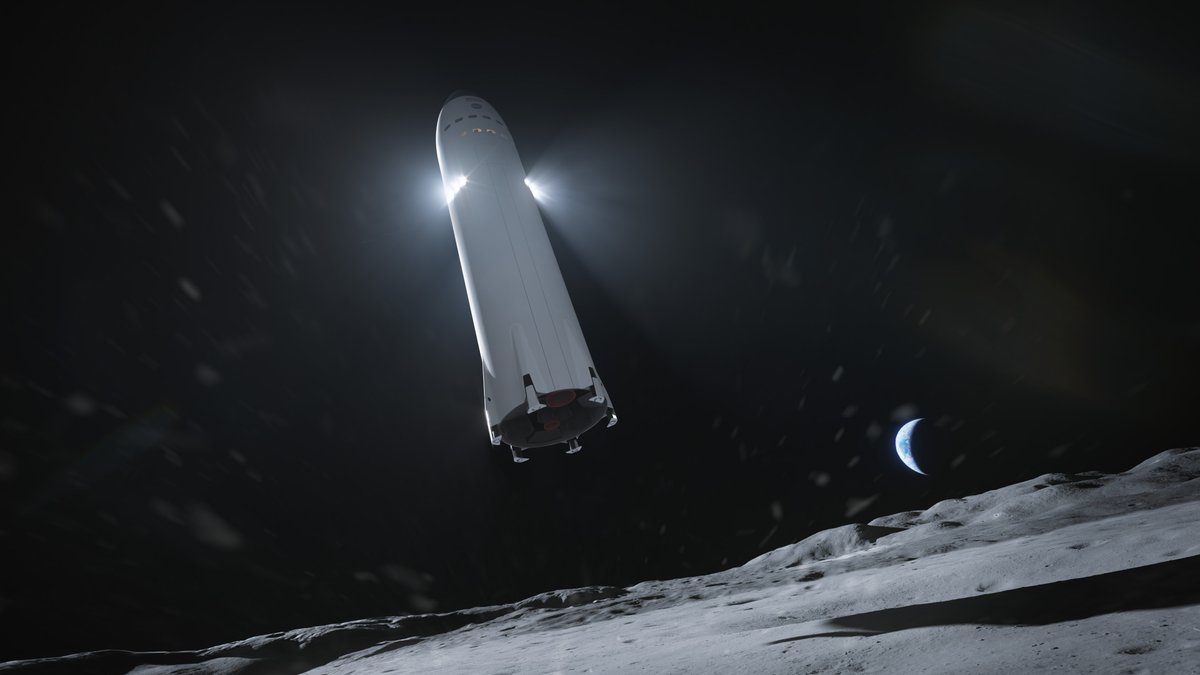
Blue Origin receives lion’s share of lunar lander money
Blue Origin is teaming with Lockheed Martin, Northrop Grumman and Draper to build an Integrated Landing Vehicle, or ILV.
Draper will lead development of the lander’s avionics and guidance systems, while Northrop Grumman will supply a transfer stage based on that company’s Cygnus space station supply ship. Blue Origin, the prime contractor, will oversee the development of a descent stage to perform a precision landing with the astronauts.
The descent stage will be powered by Blue Origin’s BE-7 engine, a deeply throttleable engine fed by cryogenic liquid hydrogen and liquid oxygen propellants.
Lockheed Martin will build an ascent stage derived from work on the Orion crew capsule to boost the crew off the moon’s surface back to a mothership in lunar orbit, and will also lead crewed flight operations and training, according to Blue Origin. The ascent module could eventually be reused for multiple trips to the moon’s surface and back.
Elements of Blue Origin’s Integrated Lander Vehicle would launch on the company’s own New Glenn rocket and United Launch Alliance’s next-generation Vulcan Centaur rocket, according to NASA.
“This truly is a noble endeavor with a serious purpose, so we have assembled a highly-accomplished national team,” said Bob Smith, Blue Origin’s CEO. “This is the kind of thing that’s so ambitious that it needs to be done with partners. It’s the only way that we can get back to the moon fast, in my view.
“Our team has been working well together for over a year now, and we’re well on the path with the heritage we have from work on Orion, on Cygnus, on New Shepard, and on our BE-7 engine,” Smith said. “We’re ready to go to work, and we’re going to go do everything in our power to move quickly to get us to the moon safely, and without sacrificing the ability to go there in a sustainable fashion.”
The Blue Origin spacecraft looks most similar to NASA’s Apollo lunar lander, which flew with two-stage design consisting of descent and ascent modules. The additional transfer element proposed by Blue Origin is required to maneuver the lander and crew from the Orion spacecraft or the Gateway station in high lunar orbit to a lower altitude in preparation for landing.
The Orion spacecraft does not have the propulsive capability to directly inject itself into a low lunar orbit, shifting some of the required maneuvers to the lander itself.
Blue Origin says it will perform an uncrewed test landing of the vehicle’s descent stage on the moon in 2023, ahead of the first Artemis landing with astronauts.
The lander’s individual elements could be launched individually on commercial rockets, or combined to launch on NASA’s Space Launch System, a company official said.
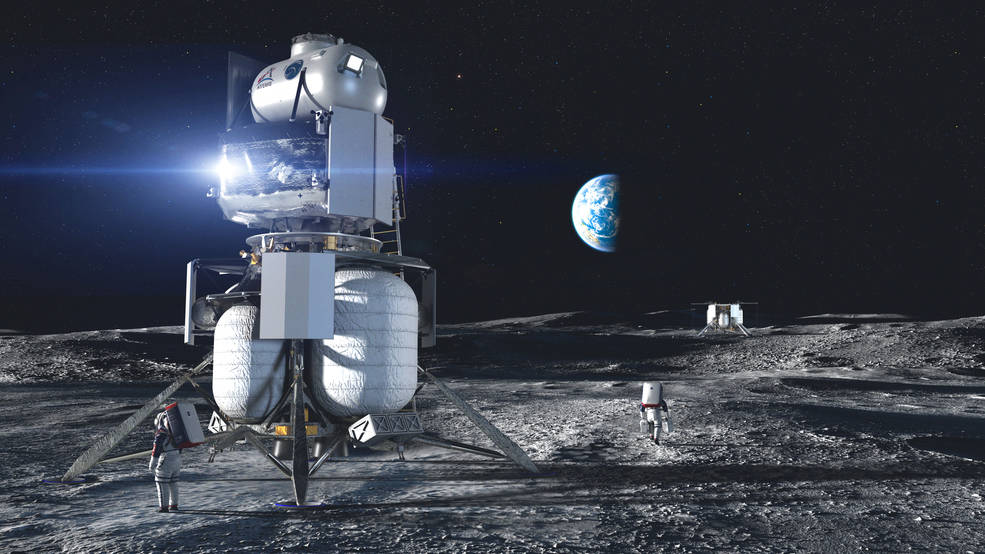
Dynetics assembles broad lunar lander team
The Dynetics Human Landing System, or DLHS, would launch as a single structure providing ascent and descent capabilities, according to NASA.
Based in Alabama, Dynetics released an artist’s illustration of its human-rated lander in January that shows a large pressurized compartment, two large propellant tanks and power-generating solar panels extending vertically from spacecraft on the lunar surface.
“The Dynetics design is a two-stage architecture with a common ascent and descent element, and anytime abort capability,” Watson-Morgan said. The Dynetics lander has a low-slung crew module, “putting the crew very close to the lunar surface for safe access,” she said.
“Dynetics will perform a demonstration flight to verify key capabilities for its lander systems,” Watson-Morgan said.
According to Dynetics, the company’s lander concept “enables near-term reusability and sustainability and provides a robust, commercially supported lander capability, while boasting flight-proven technologies for habitat, power, thermal and other subsystems.”
The lander could accommodate two crew members for “nominal missions” from lunar orbit to the lunar surface and back, including a week-long stay on the moon, Dynetics said in a press release.
The company said the lander’s elements could be launched on United Launch Alliance’s Vulcan Centaur rocket. Alternatively, the Dynetics moonship could be launched in a single piece on NASA’s Space Launch System Block 1B rocket, which will have an upgraded four-engine upper stage to replace the single-engine cryogenic upper stage on the early SLS flights.
Dynetics said its lunar lander team is located in 17 U.S. states and one international country. Major parts of the lander will be built, tested and integrated at a Dynetics facility in northern Alabama.
The Dynetics-led consortium includes more than 25 companies, including ULA, Sierra Nevada Corp., Maxar Technologies, Draper and Thales Alenia Space of Italy.
“The Dynetics team recognizes the gravity and the responsibility that accompany this opportunity, and we’ve assembled an experienced team of government and industry partners with flight-proven technology,” said Kim Doering, Vice President of the Dynetics space division. “We’re all looking forward to helping NASA achieve the 2024 goal of returning U.S. astronauts to the lunar surface, and we’re really excited about enabling a long-term commercial lunar economy.”
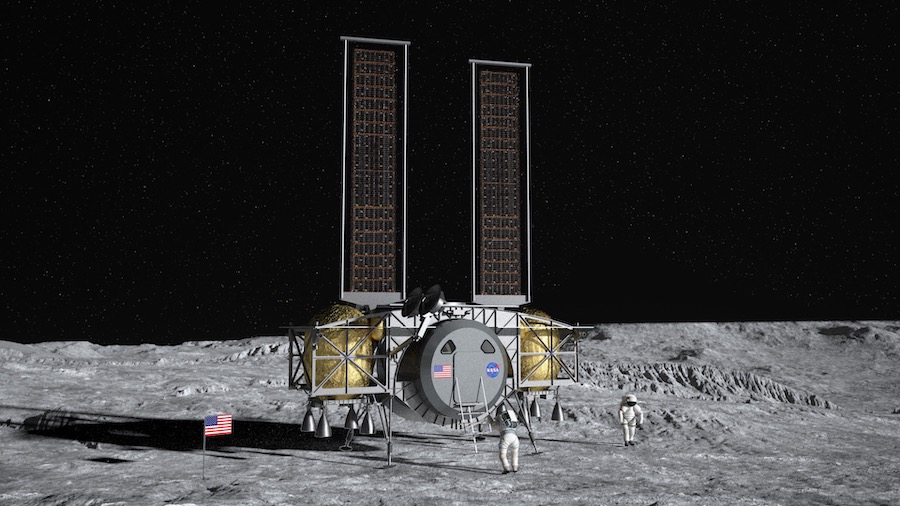
Over the next three months, NASA and each lander team will begin discussing the designs and kick off supply chain purchases of long-lead parts, according to Watson-Morgan.
“They’re all three substantively different, so they will each have different philosophies,” she said. “They have proposed different tests and all that. So part of the traditional side of NASA is that we perform insight. One of the first things we are going to review is the verification and validation plan … How are we going to make sure these systems are certifiable for humans?”
“In the first three months, this is far more than just studies,” she said. “It’s going to encompass deep design development, long lead procurements for each of the awardees.
“All that will occur before the February timeframe, so we know quickly … which one has the best shot of making 2024. So initially we’re going to get in with them elbow to elbow, virtually at this point, and review the design and construction standards,” she said. “Those are the standards that tell the engineers how to assemble (the spacecraft) — fracture control, looking at the strength and life assessment, crimping and all that. We’re going to get down and make sure, in the first three months, we are ready to start, and they aren’t going to be any later quibbles about what standards we’re going to use, and how we’re going to do this.
“So that’s going to culminate into giving us all the information and data that we need to make an intelligent selection,” Watson-Morgan said.
Bridenstine said NASA’s “baseline solution” is to launch the components of the lunar landers independently, then assemble the components together in lunar orbit using automated rendezvous and docking technology.
SpaceX’s Starship is an exception to that plan because it launches from Earth in a single piece, other than the refueling freighter in Earth orbit needed to replenish its propellant supply before heading to the moon.
“That being said, as we go through this base period, we might find out that we need an integrated lander,” Bridenstine said. “And if we do need an integrated lander and one of our partners wants to integrate it on the surface (of the Earth), then the question is how do you get that to the moon. If you have an integrated lander that weighs 40 metric tons, you might need a heavy-lift rocket, for example. That would require the SLS.
“So the solution set is really open at this point, but at the same time we know that the companies that have made proposals have their own ideas,” he said. “What we’re looking forward to in this base period is working with them to very specifically define the requirements to achieve the outcome, that gives us the highest probability of success and the lowest risk.”
Email the author.
Follow Stephen Clark on Twitter: @StephenClark1.

